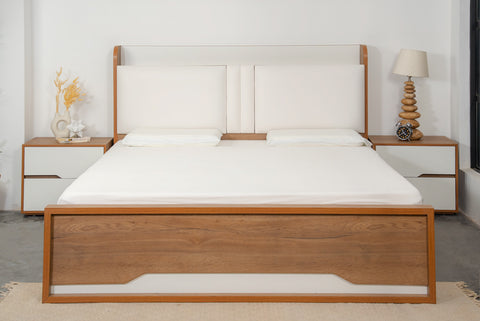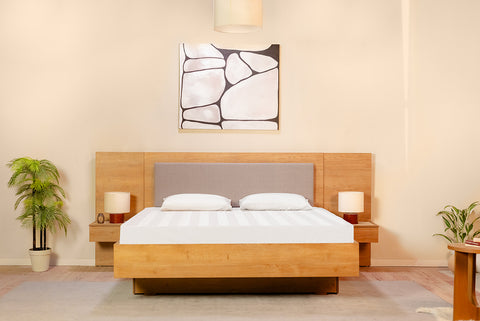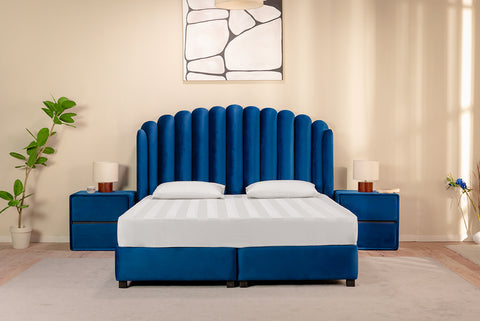Four Simple Rules That Make Every Room Work: A Guide to Furniture Arrangement
A room feels right when everything in it has a place and a purpose. The way home furniture is arranged plays a big role in how a space looks and functions. It’s not just about filling a room with things—it’s about creating ease, movement, and balance. Whether setting up a new space or reworking an old one, the arrangement matters.
At MoltyHome, the goal is to make furniture that fits into everyday life. It isn’t just about design. It’s about creating furniture that understands how people live. Each piece is made with care, purpose, and a deep understanding of the home. From beds to side tables and dressers, the pieces are shaped to suit both the room and the routine.
Furniture arrangement isn’t a science, but there are a few rules that can help. These four guidelines bring clarity to any room. They help organize space, support movement, and allow the furniture to work together naturally.
The Four Rules of Furniture Arrangement
These rules aren’t complicated, but they make a difference. Each one focuses on creating flow, balance, and function in a space. Let’s walk through them.
1. Start With a Focal Point
Every room needs a center. Something that draws attention and helps guide where the rest of the furniture should go. This focal point can be your bed in the bedroom or a recliner in the lounge. In some homes, it’s a window or a large mirror. Wherever the focus is, the other pieces in the room should support and complement it.
When placing furniture, think about how it will connect to that central point. Sofas might face a statement piece. Side tables can sit beside it. In bedrooms, dressers and nightstands can follow the bed’s lead. At MoltyHome, many pieces are made with subtle shapes and tones that help them blend in while still adding presence.
A focal point gives the room structure. It helps avoid scattered layouts and brings calm to the space. Once that point is set, arranging the rest becomes easier.
2. Maintain Clear Pathways
Rooms need space to move. No one likes bumping into a table corner or squeezing through tight gaps. That’s why leaving enough space between furniture is so important. A room feels better when it flows, when walking through it is smooth and uninterrupted.
This doesn’t mean keeping things far apart. It just means planning the layout so that there’s a natural path. Think about the routes people take in a room. From the bed to the wardrobe, from the door to the window—make sure there’s room to walk. It’s a simple change, but it makes a big difference in how a room feels.
3. Create Balance
Balance is about how weight and space are shared across a room. A room with all the large pieces on one side can feel uneven. A space with too many small items might feel scattered. The goal is to spread out size, shape, and color so everything works together.
Start with bigger pieces. Beds and sofas usually go first. Then build around them. Use side tables, ottomans, or mirrors to balance the layout. Tall dressers on one side can be matched with art or a mirror on the other.
4. Let Function Lead
Rooms are meant to be used. That’s why function always comes first. A bedroom should make rest easier. A living room should support conversation, reading, or just relaxing. Each piece of furniture should have a clear purpose.
Start by asking what the room is used for. Then think about what’s needed to support that. In a bedroom, it could be a bed with storage and a dresser for clothes. In a lounge, it might be a recliner for quiet evenings and side tables for daily essentials.
How the Rules Work Together
These four rules don’t work alone. They support each other. A good layout often uses all of them. The focal point gives direction. Clear pathways make the room feel open. Balance keeps it visually calm. Function makes it usable.
When a room follows these principles, it feels more complete. Nothing feels out of place. The space works with the person living in it. And that’s the goal. Not just to decorate—but to make a home that feels good to be in.
At MoltyHome, that’s what every piece is made for. To support the daily rhythm of life. To offer more than style. To be useful, lasting, and thoughtful.
Conclusion
Furniture arrangement doesn’t need to be complicated. With four simple rules focal point, pathways, balance, and function, it’s easier to create a space that feels right. These rules work in every room, no matter the size or style.
The furniture makes it possible. That’s why MoltyHome focuses on pieces that support these rules naturally. With the right size, shape, and purpose, each item becomes part of a home that works. Good rooms aren’t about trends. They’re about people, routines, and spaces that feel good to live in.
Frequently Asked Questions
How do I plan a furniture layout for a small room?
Use compact, multi-use furniture like MoltyHome’s sofa beds or storage beds. Keep pathways clear and avoid crowding the room.
Why is a focal point important in a room?
It helps guide the layout and gives structure. It anchors the room and makes other furniture placement easier.
How much space should I leave between pieces of furniture?
Ideally, leave at least 18–24 inches for walking space between major items. The goal is to ensure easy movement.
Should I choose function or style first when arranging a room?
Function should come first. A room should support how you live. Once that’s in place, style can follow.







